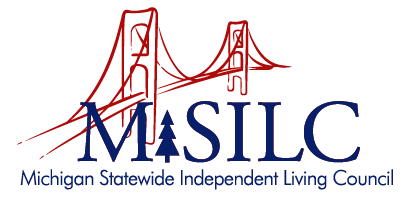Are you someone who would like to be an ally and help to promote inclusion and eliminate barriers in the community places we all share? The journey to being an ally is to listen and learn.
What is Disability Inclusion?
According to the Centers for Disease Control, “Disability inclusion means understanding the relationship between the way people function, how they can participate in society, and making sure everybody has the same opportunities to participate in every aspect of life to the best of their abilities and desires. Disability inclusion entails identifying barriers that potentially impact people with disabilities to independently live and be fully engaged in their communities.”
The CDC also provides an acronym to help people become a disability A.L.L.Y. and promote inclusion for all in their communities:
Acknowledge (and respect) individual experiences and abilities
Learn about different disability types
Leverage your influence to promote accessibility and inclusion
Yield the floor to people with disabilities to help identify and eliminate barriers.
Let’s break those down.
Acknowledge (and Respect) Individual Experiences and Abilities
Many people, especially people without a disability, have a tendency to gloss over differences, assuming that other people largely view and experience the world in the same way that they do. For example, a person who has never had an issue with mobility will likely view a set of stairs leading to the front doors of a building much differently from someone who uses a wheelchair. Because the person without a disability has never had the experience of arriving at a location and finding they have no way in, it might not even occur to them to think about the stairs being a barrier for others at all. Therefore, constructing an alternate mode of entry to ensure access for all might seem “like someone else’s issue.” But, of course, promoting inclusion and accessibility concerns all of us.
Learn about Different Disability Types
There are many different disability types that arise in a variety of ways. Some people are born with disabilities, others might acquire a disability via an illness or accident. While some disabilities are apparent, many others are not. An important part of being an ally is to not make assumptions about people.
Leverage your Influence to Promote Accessibility and Inclusion
If you are in a position to promote accessibility and inclusion, by all means do so. Obviously listening to people with disabilities and really hearing what they need and what barriers they face is a crucial first step. You likely have more influence than you think. You don’t need to be a high-level policymaker to promote accessibility and inclusion. If you are organizing a fundraising event you can ensure that the venue is accessible to all. You can remind your coworkers to use closed captioning and alt text when making presentations or posting to social media. Do you design buildings, playgrounds, or parks? Make sure that you are thinking about accessibility and inclusion in your design. Something we can all do is challenge ableism and fight against stereotypes.
Yield the Floor to People with Disabilities to Help Identify and Eliminate Barriers
Listen, listen, listen. People with disabilities know best about what people with disabilities need. They are also much more attuned to barriers than people without disabilities. If you are a person without a disability, make sure you’re not assuming what people with disabilities need or, even worse, telling people with disabilities what they need as if you know best. Wanting to be helpful is great, but if the situation involves people with disabilities but no people with disabilities are invited to participate in the conversation, that isn’t being helpful, that’s being exclusionary.
Another important part of being an ally is consent. Rutgers University Office of Disability Services gives a number of examples related to consent such as not touching a person’s wheelchair without their express permission and not petting or otherwise interfering with service animals while they are at work. It’s okay to ask someone if they need help. In fact, you should always ask first. But know that it’s also okay for a person with disabilities to decline your help. Remember that the situation is about their needs, not your feelings. Remember, as Rutgers ODS puts it, “Allyship is a process! Know that you will make mistakes. When you do, own it, apologize, and try again.”








